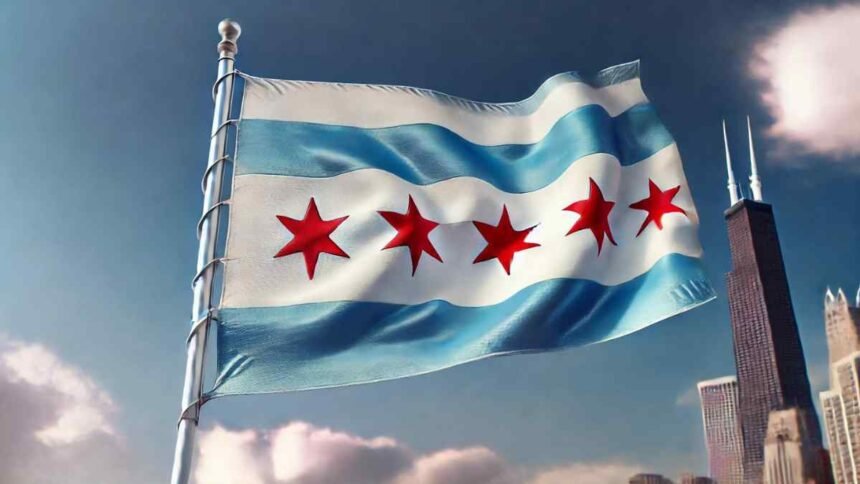The Chicago Flag stands as a powerful emblem of the city’s rich history, resilience, and unity. With its distinctive design and deep-rooted significance, it not only represents the city’s identity but also serves as a source of pride for its residents. Understanding the symbolism behind the Chicago Flag offers insight into the spirit of the Windy City and its people.
The History and Evolution of the Chicago Flag
The Chicago Flag, designed by Wallace Rice in 1917, is one of the most recognizable city flags in the United States. The flag’s design was carefully crafted to reflect the city’s history and character, with each element symbolizing a significant aspect of Chicago’s past and present. Originally featuring two blue stripes and two stars, the flag has evolved over time to include additional stars, each representing key events in the city’s history.
The Meaning Behind the Chicago Flag’s Design
The Chicago Flag’s design is rich with symbolism:
- The Blue Stripes: Represent the major bodies of water that define Chicago—the top stripe symbolizes Lake Michigan and the North Branch of the Chicago River, while the bottom stripe represents the South Branch of the Chicago River and the Great Canal.
- The White Stripes: These symbolize the North, West, and South sides of the city.
- The Red Stars: Each of the four red stars on the flag represents significant events in Chicago’s history:
- The first star represents Fort Dearborn, a symbol of the city’s early history.
- The second star commemorates the Great Chicago Fire of 1871, which reshaped the city.
- The third star honors the 1893 World’s Columbian Exposition, a defining moment in Chicago’s cultural development.
- The fourth star was added to represent the Century of Progress Exposition held in 1933-34.
Chicago Flag in Popular Culture and Civic Pride
The Chicago Flag is more than just a symbol of the city’s government; it has permeated the culture and daily life of its residents. The flag can be seen across the city, adorning everything from municipal buildings to tattoos. Its popularity is a testament to the strong civic pride felt by Chicagoans. The flag’s design is simple yet powerful, allowing it to be easily adapted and embraced by people from all walks of life.
The Flag’s Role in Community and Identity
For many Chicagoans, the flag is a symbol of unity and identity. It serves as a reminder of the city’s ability to overcome adversity and rebuild stronger than before. The flag’s widespread use in both official and unofficial contexts reflects its importance in the collective consciousness of the city’s residents.
Why the Chicago Flag is a Global Icon
The Chicago Flag’s influence extends beyond the city limits. Its design has inspired other cities and organizations to adopt similar symbols. The flag’s clear and meaningful design principles make it a model for civic symbolism worldwide. The global recognition of the Chicago Flag is a testament to the city’s impact on culture, history, and urban development.
The Future of the Chicago Flag
As Chicago continues to grow and evolve, the flag remains a constant, representing the city’s past, present, and future. Discussions about adding a fifth star to the flag occasionally arise, with suggestions ranging from commemorating Chicago’s advancements in technology to recognizing its contributions to social justice. Regardless of potential changes, the Chicago Flag will always stand as a symbol of the city’s enduring spirit.
FAQs
1. What do the stars on the Chicago Flag represent?
The four stars on the Chicago Flag symbolize significant events in the city’s history: Fort Dearborn, the Great Chicago Fire of 1871, the 1893 World’s Columbian Exposition, and the Century of Progress Exposition in 1933-34.
2. Why is the Chicago Flag considered iconic?
The Chicago Flag is iconic due to its simple yet meaningful design, which resonates deeply with the city’s residents and represents Chicago’s rich history, resilience, and cultural impact.
3. Could the Chicago Flag get a fifth star?
Discussions have arisen about adding a fifth star to the flag to commemorate new milestones, such as Chicago’s advancements in technology or contributions to social justice, but no changes have been officially made.
For More Visit, Viraltimes.co.uk







